London Parks & Gardens Guide
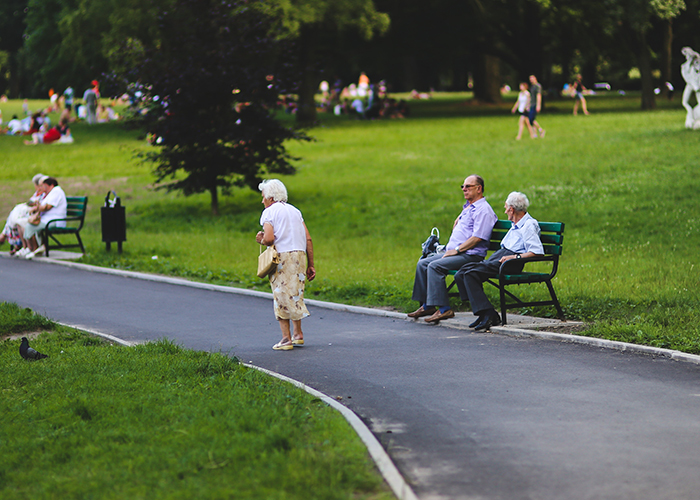
Parks & Gardens in London
Chelsea Flower Show
An event rather than a permanent fixture, but if you’re planning a visit to London in May, why not see if your visit could coincide with the Chelsea Flower Show?
Every year, for five days in May, the grounds of the Royal Hospital , Chelsea , are transformed into the fabulous show gardens, inspirational small gardens and vibrant horticultural displays that make up the world’s most famous flower show.
The RHS Chelsea Flower Show is the first event of the summer season and showcases the finest examples of horticultural excellence, created by the best garden designers, plantsmen and plantswomen. It sets the latest gardening trends, is plant breeders favourite place to launch new plants and features the newest and most desirable gardening products.
Designers from across the globe apply to create show gardens and, with a limited number of spaces, only very special designs make it to the show. A committee of horticultural experts meet three times to assess the applications before selecting around 20 show gardens, which will create the impact and spectacle that Chelsea is renowned for.
The smaller gardens, which often act as a platform for up and coming designers, are split into four different categories – the stylish and bold chic gardens, courtyard gardens, which are for rural or semi-rural settings, roof gardens and city gardens, which are sanctuaries for urban dwellers.
Within the Great Pavilion – the centre-piece of the show – more than 100 floral displays create a vision of colours and textures and an explosion of scents. Specialist nurseries and leading exhibitors from all over the world go to great lengths to ensure their blooms are at their very best for show week.
On top of all this, visitors can pick up a wide range of gardening accessories, and many new gardening products make their debut at the show. Those wishing to learn and discover some of the latest scientific developments in horticulture must see the Lifelong Learning exhibits within the Great Pavilion. The latest trends in floral art and floristry can also be seen at the show.
Chelsea Physic Garden
Visit one of the oldest botanical gardens in Europe and see the history of the apothecary brought to life before your eyes.
When the Worshipful Society of Apothecaries founded the Chelsea Physic Garden (then known as Apothecaries’ Garden) in 1673 to train apprentices in identifying various species of plants, they did not know that their “Garden Club” would become London ‘s centre of education and relaxation.
Located at 66 Royal Hospital Road in Chelsea , London , this 3.5 acre Garden is now one of the oldest botanical gardens in Europe . It is home to the oldest garden devoted to alpine plants, and has the largest fruiting olive tree in all of Britain.
In the beginning, the Garden occupied a site owned by Sir John Danvers. Some years later, Dr. Hans Sloane, a physician, purchased the adjacent Manor of Chelsea from Charles Cheyne, and leased the entire 4 acres to the Society of Apothecaries for a paltry sum of £5 a year in perpetuity.
The Society of Apothecaries managed the Garden from its inception until the 19th century, when the City Parochial Foundation agreed to run it. Back then, the Garden was still closed off to the public. It only allowed public access in 1983 when the Garden became a registered charity.
Today, the Garden has a collection of 5000 plants including tropical and sub-tropical species, medicinal plants, and rare and endangered species. On occasion, the Garden may also be rented out for events. It has a reception room that can comfortably seat 135 people (buffet style). A lecture room, equipped with projector screens and a blackboard is situated just above the reception room.
Plant enthusiasts can reach the Garden by three means: by tube, by bus or by car. Although the address states that it is located on Royal Hospital Road , you have to enter via a side street called Swan Walk.
The Garden is located near Chelsea Royal Hospital , home to war veterans; the National Army Museum ; and the Antiquarius Antique Shopping Road (King’s Road). Nearby lodging facilities include classic hotels such as the London Outpost, Draycott Hotel, Cadogan and The Pelham; as well as contemporary accommodations such as MyHotel Chelsea and Blakes, both located just along Sloane Avenue , and the Knightbridge Hotel.
Green Park
Walk along the 7 mile walkway dedicated to Princess Diana in Green Park.
Green Park is one of the several Royal Parks that form an unbroken stretch of land and foliage from Whitehall to Notting Hill. Visitors of Green Park must make it a point to go through the seven-mile walkway made in honor of the late Lady Diana, Princess of Wales on the 3rd anniversary of her death. The path, marked with seventy plaques, snakes through several Royal Parks and passes through Kensington Palace , Buckingham Palace , St. James’s Palace, Clarence House and the Spencer House.
Once upon a time, Green Park was a swamp and the burial grounds of lepers from the Saint James’s hospital. It was enclosed in the 16th century by King Henry VIII and became a park in 1668 when Charles II was the reigning monarch. Prior to being called Green Park in 1746, this area was more known as Upper St. James’s Park.
The 53 acre garden is located between Hyde Park and St. James’s Park. Unlike the other Royal Parks, Green Park is almost devoid of lakes and statues or fountains, though this was not always so. In the 1700s, Green Park housed the Tyburn Pool, a reservoir called the Queen’s Basin, a Ranger’s Lodge and two temples namely the Temple of Peace and the Temple of Concord . Today, the only man-made monument found in Green Park is Pierre Granche’s Canada Memorial. Green Park is bounded by Constitution Hill on the South, Queen’s Walk to the east, and Piccadilly to the north. Opposite the entrance of Buckingham Palace is the Queen Victoria Memorial Gardens , the place where The Green Park merges with St. James’s Park.
Hampstead Heath
Located just three stops South from Hendon Central, Hampstead Health is a wild and untamed park with some fantastic views over London from Parliament Hill. At over 800 acres it is a large park and boasts over 25 ponds. You will often see impressive kite flying on Parliament Hill and a quick stroll to the bottom will provide you with a number of cafes and pubs to wet your whistle.
Hendon Park
Very conveniently placed just 100m from the London Backpacker Hostel, and although the park does not compare with any of the major London parks in terms of size or features, it does provide an excellent place to relax, have a drink in the sun or get some exercise. The park houses six free tennis courts and plenty of cut grass for football or other games. A friendly atmosphere ensures that a football game that starts about with five or six, can end up as one with twenty.
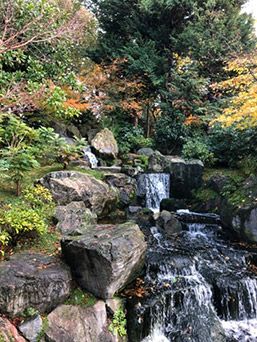
Holland Park
One of London’s most romantic parts and an excellent place to take are partner or potential partner. While you’re there, don’t forget to visit the Kyoto Japanese Garden , rose gardens, woodland, wildlife pond and ecology centre. The park’s abundant wildlife includes tame rabbits, squirrels and peacocks. There is also an adventure playground, cafe, and, during the summer, open-air theatre and opera under an elegant canopy.
Holland Park , a small yet romantic park in London is located near Kensington High Street , at the Royal Borough. It opened only in 1952 on what was left of the grounds of Holland House.
Holland House was named after one of its first owners, Sir Henry, Earl of Holland. The Jacobean wing of Holland House was built by Sir Walter Cope, Chancellor of the Exchequer for James I, in 1607. During the 19th century, this house was frequented by distinguished social and political figures such as Lord Palmerston and the poet Lord Byron. The land on which Holland House stood was, sometime during the late 19th century, gradually sold off until all that was left of the once-sprawling landscape is the park we know today.
The main attraction of Holland Park is the reconstructed Jacobean Holland House. It was damaged extensively during the 2nd World War and only the ground floor and the arcade remain intact. The east wing has been restored, and it is now a youth hostel. What once was the summer ballroom has now been converted into a restaurant named “The Belvedere”. Plays and exhibitions are often staged either at the orangery or the ice house.
Other attractions at Holland Park include the Kyoto Japanese Garden, an adventure playground, sports facilities, a cafeteria, an ecology center, grassed areas and woodlands that are home to rabbits, squirrels and peacocks, a dog run, and several formal and informal gardens that make Holland Park appear more wooded and intimate than its larger, royal counterparts.
The carefully maintained Holland Park is located right in the heart of West London , a few steps away from delightful little shops or the well known Notting Hill.
There are several accommodation facilities located within the vicinity of Holland Park . From five-star hotels to more affordable bed and breakfasts or hostels, guests can choose which one best suits their needs and their budgets.
Hyde Park
Visit Hyde Park and the famous Speakers Corner.
Central London ‘s largest park, extensive and well maintained. Who would have thought that the place where King Henry VIII and his court would hunt deer and wild boar would transform, after half a century, into one of London ‘s finest, most picturesque and most popular tourist attractions?
Hyde Park, one of the four “Royal” parks that form an unbroken line of foliage from the Houses of Parliament to Olympia , covers a vast 140 hectares (350 acres). It was acquired by Henry VIII in 1536, from the monks of Westminster Abbey, and used it as his private hunting grounds. When James I ascended the throne, he allowed limited access to the park and appointed a ranger to maintain its upkeep. However, it was Charles I who was responsible for opening the grounds to the general public.
In the 17th century, William III had 300 oil lamps installed along a route he found dangerous. This pathway, which was later, called Rotten Row from the French ‘Route de Roi” or King’s Road could may have well been the first artificially lit highway in the country.
Hyde Park has various interests to suit almost all visitors. Hyde Park should make it a point to “speak up” at the very popular Speakers Corner, an area where everyone is allowed to speak on any subject. Speakers Corner is located at the north-east corner of Hyde Park and the tradition of speaking here may have been started in 1866 when the Chartist movement of Edmund Beales used the park as a gathering place of workers. Since then, it has been the site for public debates, speeches, as well as the assembly point for protest rallies in Britain.
Another site worth seeing is the Serpentine Lake , an 11.34 hectare lake which was one of the many renovations initiated by Queen Caroline, wife of George II. The Serpentine, together with the Lido , are places where people can sunbathe and swim.
Aside from these, Hyde Park also boasts of having a Tennis and Sports Centre, a horse riding arena or ‘Manege’, playground, The Lookout (a former police observation point that has been converted into an educational centre), toilets and several catering outlets such as The Dell: a large outdoor eating area located east of the Serpentine; The Lido Café: near the Diana Princess of Wales Memorial Fountain, at the South side of the Serpentine; and the Honest Sausage: a snack bar at the Speakers Corner.
To further illustrate the beauty and appeal of the park, Hyde Park is one of the more favored locations of films since the birth of cinema. The first moving pictures, made in January 1889, were filmed near Apsley Gate. Part of the opening credits of the 1956 adaptation of Jules Verne’s Around the World in Eighty Days was filmed at the southern edge of the park. In recent years, scenes from the 2003 movie Johnny English were shot at the South Carriage Drive.
Hyde Park is open daily from 5 am until midnight . Visitors can reach Hyde Park by tube or by bus. It is not advised to come by private car as parking is extremely limited.
Richmond Park
Richmond Park is the largest of the Royal Parks found in London.
Richmond Park , with its vast rolling grasslands and large, ancient trees, has the distinction of being the largest of the eight Royal Parks in London , as well as Europe ‘s largest urban walled park. The park itself spread out to almost 2,500 acres and is home to various flora and fauna.
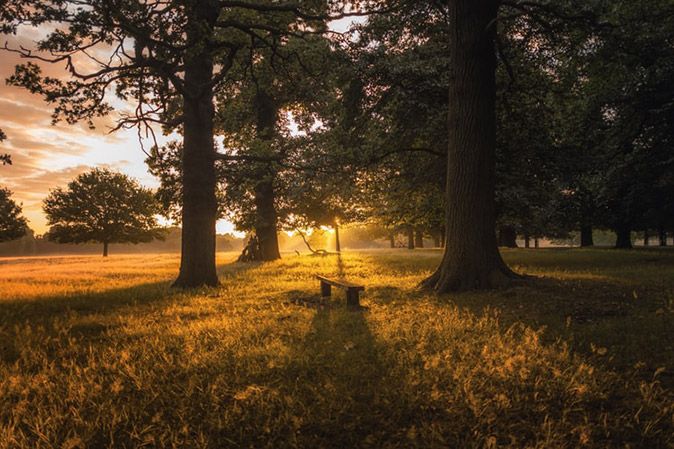
Richmond Park , formerly known as the Manor of Sheen, used to be the Royal deer hunting grounds of King Edward I (1272 – 1307). During the reign of Henry VIII, the name was changed to Richmond Park . When the plague hit London in 1625, Charles I moved his court to Richmond Palace to avoid being contaminated. It was closed off to the public in 1637 but pedestrians were given the right of way. In the 18th century, public access to the park was granted after some legal battles, it remains open to the community to this day.
Visitors of Richmond Park should make it a point to visit the Isabella Plantation, a woodland garden created after World War II where a profusion of flowers such as azaleas and rhododendrons grow in abundance. Herds of red and fawn deer also roam around the plantation freely.
Another point of interest is called King Henry VIII’s Mound. The view from its peak is incomparable; it provides an uninterrupted view of St. Paul ‘s Cathedral, which is located a good 12 miles away.
A Georgian mansion called Pembroke Lodge is also located within the confines of Richmond Park . Pembroke Lodge used to be the residence of former Prime Minister, Lord John Russell, and childhood home of his grandson and renowned British philosopher, Bertrand Russell. Today, the Lodge is one of the three main refreshment points at Richmond Park . It has a banqueting facility that can accommodate up to 130 people, and has a glorious view of the Thames Valley.
Other facilities of Richmond Park include a playground at Petersham Gate, educational facilities at Holly Lodge, restrooms and several car parks.
Richmond Park is now a Site of Special Scientific Interest, a National Nature Reserve and is also a cSAC Special Area of Conservation for the Stag beetle.
Richmond Park is open daily from 7:00 am in the summer and 7:30 in winter, to dusk. To get there by train, you can take the British Rail or District Line then take bus 371 or 65 to Petersham. If you want to take the bus, there are several buses from the Northside, Southside, Eastside and Westside.
Greenwich Park
The park is part of the Greenwich World Heritage Site, host to the Prime Meridian Line and the old Royal Observatory, as well as having the National Maritime Museum as a neighbour. While you’re there, stop and enjoy a stunning view of St Pauls cathedral
The famed Greenwich Park is the oldest of the eight Royal Parks in London . The Duke of Gloucester, brother of Henry V, inherited the 183 acre land in 1427 and in 1433 he had the Park enclosed. He then passed on its ownership from generation to generation. In fact, his descendant, Henry VIII, and his two daughters Mary I and Elizabeth I, were born in Greenwich Park.
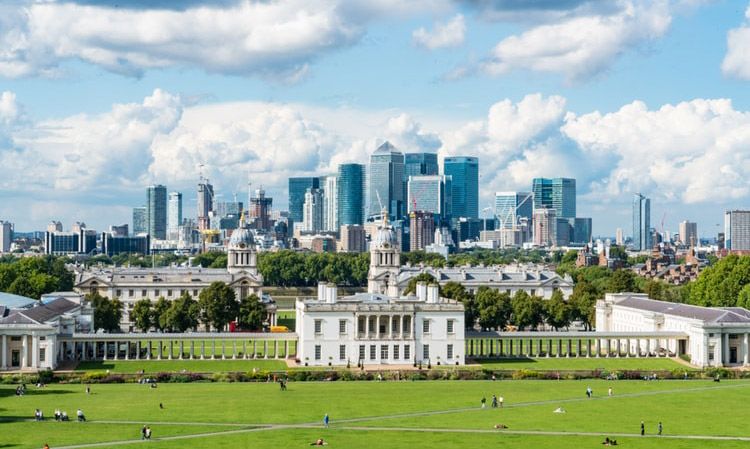
Greenwich Park is the site of several historic buildings such as the Queen’s house, the home of Queen Anne that was designed by famed architect, Inigo Jones; the National Maritime Museum, the twin-towered Royal Naval College (now part of Greenwich University) and The Royal Observatory (originally called Flamsteed house, after the astronomer John Flamsteed) which was built by Sir Christopher Wren. However, the Greenwich Park is most known for the Greenwich Meridian Line, the place where all the time zones in the world are measured.
Greenwich Park is probably the most accessible of all Royal Parks. It can be reached by tube, train, bus, the Dock Light Railway, by riverboat and even by car. It opens at 6:00 am for pedestrians and 7:00 am for vehicles all year round. Aside from leisurely strolls, visitors can also go to the boating lake and hire boats and canoes for brief boating expeditions. Another option is to go to the 13-acre grassland enclosure which is home to deer, foxes and birds. After a full day at the park, one can partake of refreshments at either The Tea House, or at Saint Mary’s Gate Café (near the National Maritime Museum ).
Unfortunately, there are no international hotels within the Greenwich and Blackheath areas. Alternative forms of accommodation include guest houses, smaller hotels, and to some extent, camping and caravanning. For campers, bear in mind that Greenwich is located just five miles from central London and camping facilities are not readily available. The nearest camping facilities can be found at the Abbey Wood and Camping Site along Federation Road.
Kensington Gardens
While you’re out visiting Kensington Palace , don’t forget to go for a stroll in the beautiful gardens, including peaceful Italian Gardens , the Albert Memorial, Peter Pan statue and the Serpentine Gallery. have a look at our guide for further information
Located to the west of Hyde Park is Kensington Gardens , a 275 acre park that is rightly considered as one of the eight royal parks in London . It was originally part of Hyde park until it was bought by William III in 1689. The West Carriage Drive (The Ring) serves as the informal boundary of the two parks.
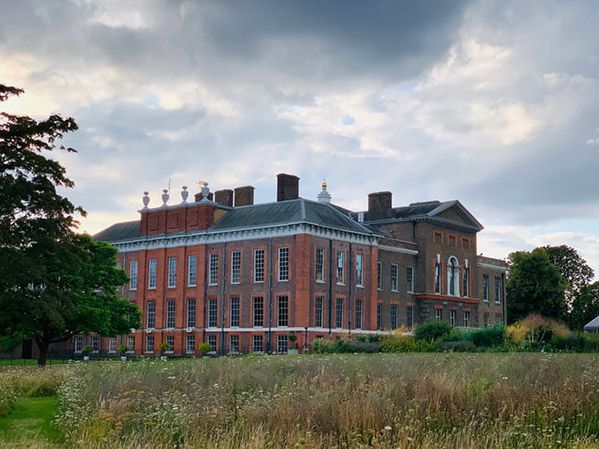
The red, brick building that is known as Kensington Palace was constructed by Sir Christopher Wren under the directions of William III. In the year 1704, the Palace Gardens were further enlarged when Queen Anne “transferred” around 30 acres of land from Hyde Park to create an Orangery. The Serpentine and the Long Water were added in 1728, by Queen Caroline, wife of George II. Back then, the Garden was not accessible to the public. The gates were gradually opened but only those who were respectably dressed were allowed to enter.
Kensington Gardens is known to be the home of several monarchs. William III and his wife, Mary II considered this their London home. Queen Victoria was born in Kensington Palace and stayed there until she ascended the throne in 1837. It was she who had the Italian Gardens and the Albert memorial commissioned. Queen Victoria ‘s statue, sculpted by her very own daughter, Princess Louise, still stands guard outside Kensington Palace.
Some attractions at Kensington Gardens include the Elfin Oak: a gnarled, partially hollow stump that is carved with figures of fairies, elves and other small animals; the Diana, Princess of Wales Memorial Playground; the Round Pond, and the bronze statue of the much loved fairy tale character, Peter Pan.
Kensington Gardens is popular not only to tourists but to Londoners as well. In the summer, sunbathers and picnickers are a common sight. On regular days, commuters pass through Kensington Gardens on their way to work, and health buffs jog, run, or cycle along its many paths.
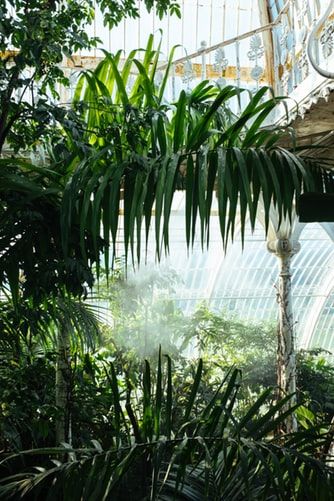
Kew Gardens
Kew Gardens boasts the largest collection of living plants in the world.
Kew, the Royal Botanic Gardens in London , is a world class cultural and heritage site that was officially inscribed on the list of World Heritage Sites of the United Nations in 2003—joining the Great Wall of China, the Grand Canyon, The Taj Mahal and the Tower of London . The inclusion of the Kew Gardens in the list is in recognition of its historic landscapes and outstanding buildings as well as its significant contribution to science and plant research.
The beginning of the development of the Kew Gardens can be traced back to 16th century, when Henry VII built Richmond Palace to serve as his primary place of accommodation. The neighboring areas of Kew and Richmond were situated on a prominent bend in the River Thames, but they were quiet towns and not considered much of a political power. And then emerged the British Royalty, and as the area attracted nobles and other people of influence, Kew became a hub of power. As London ‘s culture blossomed, so did The Royal Garden, thanks to the public interest in architecture and gardens.
At a certain point in its history, the Kew Gardens suffered a decline, to the point that the Botanic Gardens at Kew no longer actively collected plants. The year 1841 saw its renaissance and it flourished under Queen Victoria ‘s patronage. Its potential as a public attraction was then discovered.
Kew ‘s conservation ethic emerged sometime in 1945 when concerns for the world’s ecosystems were raised. From its initial role in developing the Empire by supplying seeds, crops and horticultural advice to the colonies, it refocused its mission to serve the needs of the world community. Kew shifted focus to conservation-led research and economic botany to become one of the world’s leading plant species conservation centres.
The major attraction of the Kew Garden is the Palm House- the building that is considered an icon in Kew for being the world’s most important surviving Victorian glass and iron structure. Other notable attractions includes the Bamboo Garden, the Rhododendron Dell, the Syon Vista, Queen Charlotte’s Cottage, the Cedar Vista, the Dutch House, the Queen’s Garden, the Herbarium, the Water Lily House, the Pagoda Vista, the Alpine House, the Princess of Wales Conservatory, the Jodrell Laboratory, the Orangery, the Broadwalk and the Nash Observatory.
Visitors are encouraged to come to Kew Gardens using public transportation due to limited parking space and environmental reasons. A tourist can use the Tube ( London ‘s Underground), the Rail or the bus to reach it from their place of accommodation. Alternative modes of transportations are the bicycle, the riverboat and the car or coach.
Daily tours are conducted starting from the Victoria Gate Visitor Centre. It lasts for an hour and is limited to 15 people per tour. The visitor needs to register at least 15 minutes before the tour and the policy of first come, first served is observed. Family activities are regularly offered to guarantee enjoyment while appreciating the Kew environment.
Ranelagh Gardens
Visit the beautiful Ranelagh Gardens while you’re in London , not to mention its famous rotunda.
One of the royal gardens, the Ranelagh Gardens is a public pleasure garden. It is located in Chelsea , just outside London , England.
The Ranelagh Gardens were established in the 18th century. Its name was taken from the place in which it was built, the grounds of the estate owned by the Earl of Ranelagh. In 1741 the grounds were purchased by Sir Thomas Robinson MP, and the Gardens opened to the public the following year.
Ranelagh Gardens was immediately embraced by the public. It was considered more fashionable than its older rival Vauxhall Gardens , and its entrance charge was 2 shillings and six pence, compared to a shilling at Vauxhall. Its visitors included some of the most elite of London ‘s society. As Horace Walpole wrote soon after the gardens opened, “It has totally beat Vauxhall… You can’t set your foot without treading on a Prince, or Duke of Cumberland .”
The Ranelagh Gardens were also the favourite destinations of famous English writers, who were inspired by its beauty to create some of the world’s best poems and novels. On her visits to London , Jane Austen either personally or vicariously through the characters of her writing, certainly enjoyed the parks, and tangentially, the pleasure gardens. She mentions drives through the City in 1813, “The driving about, the carriage being open, was very pleasant. I liked my solitary elegance very much, and was ready to laugh all the time at my being where I was.’
The original Ranelagh Garden had a rococo Rotunda, painted by Canaletto in 1754.The rotunda has a diameter of 120 feet (37 metres). It was designed by William Jones, a surveyor to the East India Company. In 1765 the nine year old Mozart performed in this showpiece. In 1750 a Chinese pavilion was added, as well as an ornamental lake and several walks. The rotunda was closed for in 1803 and demolished two years later. The site is now part of the grounds of Chelsea Hospital.
Regents Park
Why not see if Regents Park , with the largest outdoor sports pavilion, has anything on while in London ? Or perhaps just go along to have a look anyway. Have a look at our guide to see what else is on offer at Regents Park.
Regent’s Park is considered one of London ‘s Royal Parks. Known as “the jewel in the crown”, its breathtaking gardens and landscapes were designed by renowned architect John Nash.
Regent’s Park is the largest outdoor sports area in London . It sprawls across 197 hectares (487 acres including Primrose Hill).
Henry VIII first used Regent’s Park as a hunting ground, and frequently explored the area on his prize horses. A ditch and rampart separated the area from the rest of the land, and though trees were thick, there was little to no scenery. Even Henry VIII himself would be surprised at how the place has changed.
The Park has an open air theatre, which holds performances from end of May to early September; bandstands for concerts, usually held during lunch and evening; a lake side theatre, puppet shows, and one of the most poplular tourist attractions, London Zoo.
Regents Park has one of the most extensive sports facilities, and it is common for both locals and tourists to head here for a fun day under the sun. There are tennis and netball courts. There is a running track. The Park’s sprawling fields are also ideal for cricket, softball (the park houses the London Softball League (LSF), the largest competitive softball league in the country), rounders, football and hockey. The latest addition to Regents Park are rugby pitches and three new playgrounds. Visitors can also go boating in the nearby lake.
Regents Park also has golfing facilities. There is a golfing area for recreational play, and it also runs a Golfing school and coaching facility (including video analysis). There is even a small Pro Shop where you can buy golfing equipment.
The Park has a café and several restaurants, where you can have a leisurely lunch between games, or a light dinner before heading back to the hotel.
St James’s Park
Situated just a short walk from Westminster St James’s Park can be a welcome break from the hustle and bustle of the City.
St James’s Park is one of London ‘s royal parks, and considered one of the most beautiful and intimate parks in the city. Its beautifully landscaped gardens, picturesque walkways, and serene atmosphere make it a popular destination for both tourists and locals.
St. James’s Park was not always this beautiful. It was originally a marsh, but in the 15th century Henry VIII had the area drained to create a deer park for St James’s Palace. Two centuries later, Charles II commissioned a French landscape gardener, André Le Nôtre, to transform the deer park into a garden. It was during this time that the aviary was built. In the 19th century, famous designer John Nash added even more beautiful landscaping.
Today, no one would think that St. James’s Park was once barren marshland. It is the most ornamental park in London . Many people go here to take a walk, feed the ducks and pelicans, or even sunbathe. During the summer, a band plays music throughout the day, while a nearby café serves refreshments.
One of St. James’s Park’s most prominent features is the lake, now considered a wildfowl sanctuary. It is the home of ducks, geese, pelicans, and black swans. The lake is spanned by a bridge, from which visitors can get an excellent view of Buckingham Palace . It is particularly beautiful at night, when the palace is flooded by golden light, which reflects on the lake’s waters.
Admission to St. James Park is free. It is a 3 minute walk from the Westminster Underground (going south east) and the St. James Park Underground (going south west). It is a 5 minute walk from the Charing Cross Underground (going north east) and the Charing Cross Railway Station (going north east). There is also ample parking for those who are bringing their cars.
Battersea Park
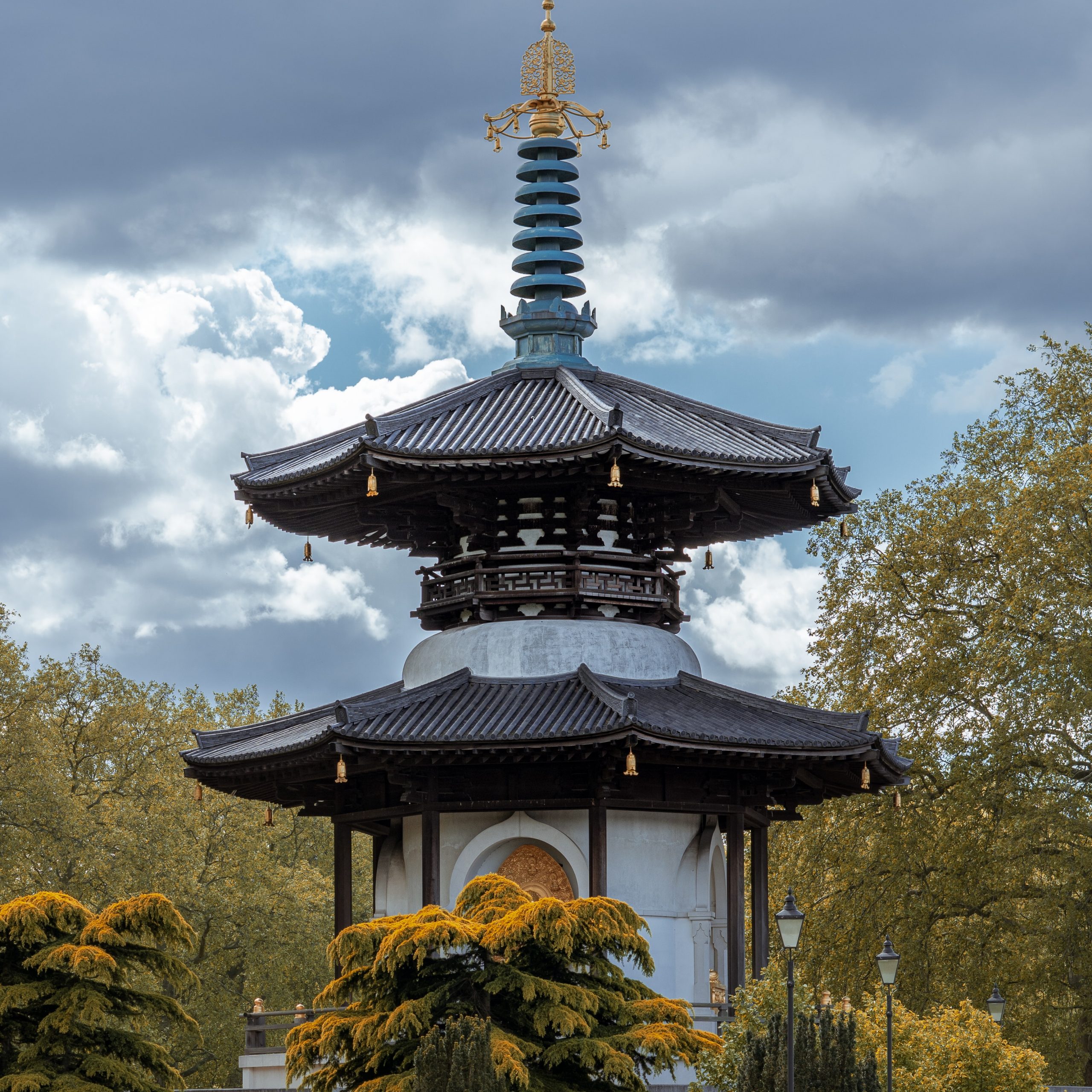
A 200-acre Victorian park with family-friendly activities. Battersea Park was built between 1854 and 1870 and faces Chelsea. It is built on marshy land reclaimed from the Thames, as well as land that was previously used for farming.
It includes a riverfront promenade, a large lake, huge trees, and ecological areas. For children’s, you can find play areas and even a zoo. There’s also worth to mention the Pump House gallery, a ceremony venue, and sports facilities.
Brockwell Park
Brockwell Park is one of your ideal parks if you enjoy nature. It’s also a Borough “Site of Importance for Nature Conservation” (or SINC) for London Borough of Lambeth. You’ll find a large park with ponds, trees (including ancient oaks), a walled ‘Old English’ flower garden, and wide, open meadows set within a hilly landscape.
You can find a children’s playground and wet play area, tennis and basketball courts, and grass football pitches as zones. Furthermore, because of its open spaces, you can engage in a variety of sports or even have a picnic!
Victoria Park
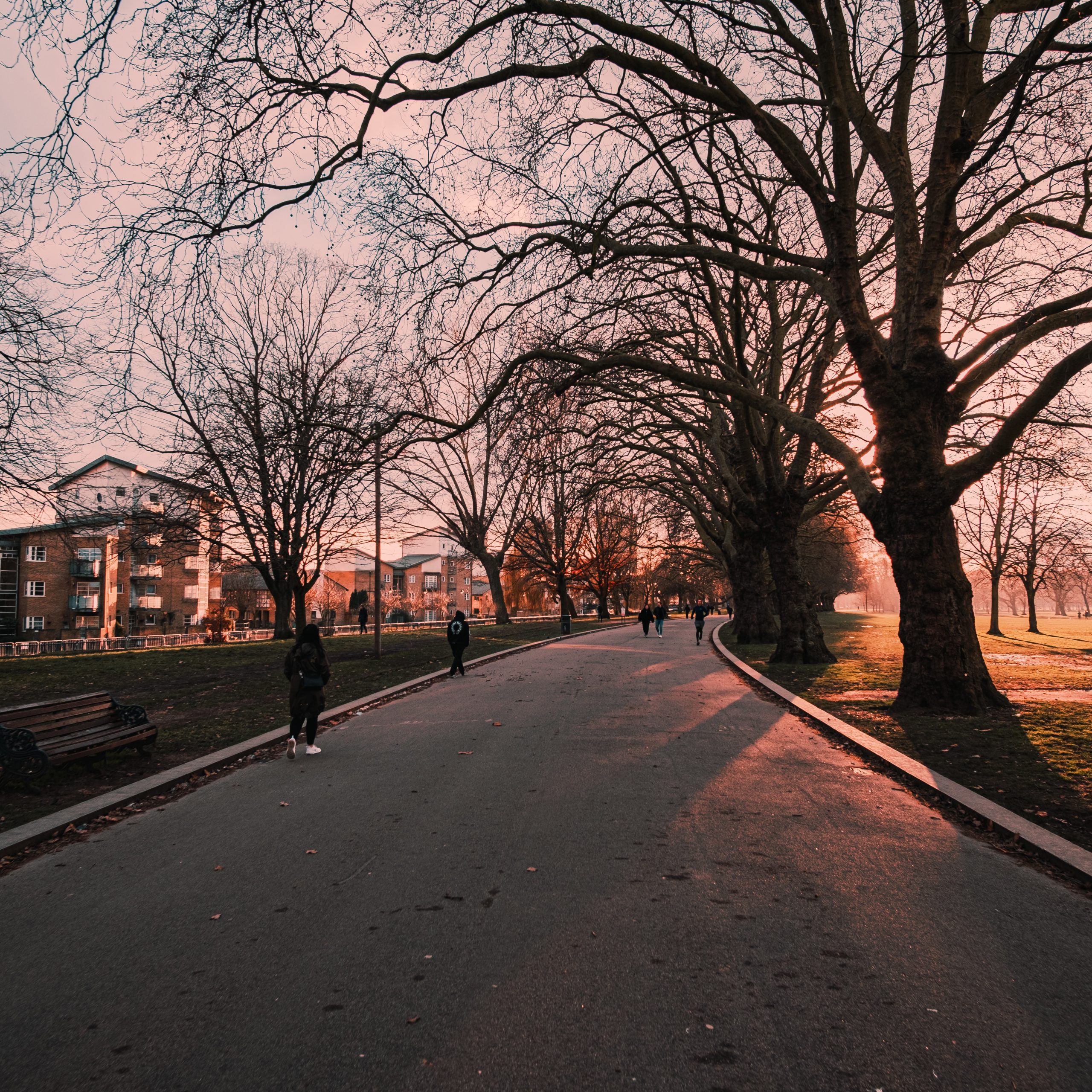
Set aside a day to go for a walk in Victoria Park if you want to visit one of London’s most historic locations. It’s the city’s oldest public park and is well-known for its relaxation, sports, and play areas.
With 9 million visitors per year, the park provides a variety of formal and informal sports, sponsored activities, events, and festivals throughout the year.
Bushy Park
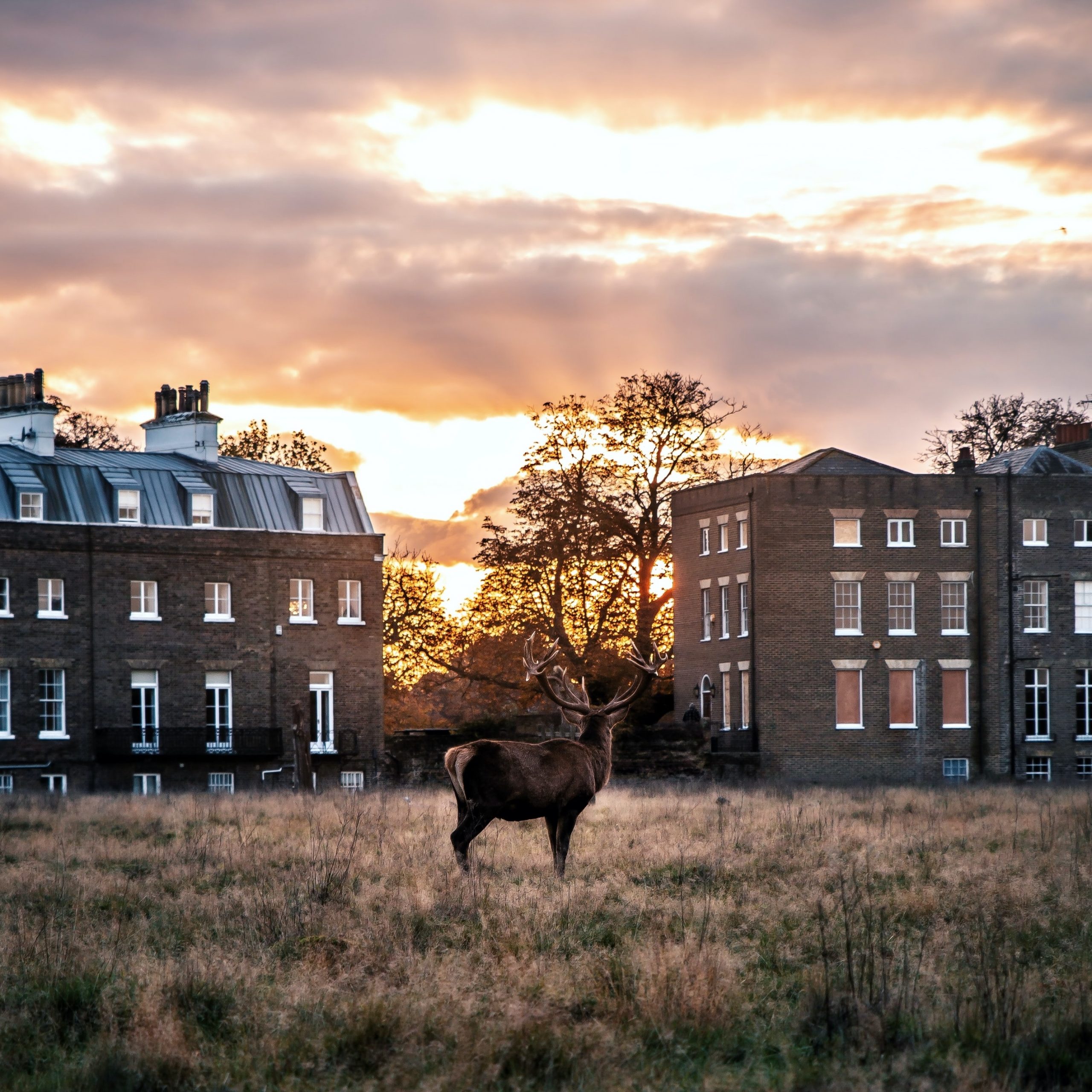
Another of London’s iconic parks for nature and history buffs. There will be traces of mediaeval farming systems, the legacy of a Tudor deer park, 17th century water gardens and decorative features representing the pinnacle of neoclassical taste, and traces of military camps that played significant roles in the World Wars.
Clapham Common
Another green historical landmark in London. Clapham Common is one of the city’s oldest and largest public open spaces. This verdant corner of London, measuring 85 hectares, was first mentioned in the famous Domesday Book in 1086!
Because of its unique landscape, it has become one of the most popular tourist destinations. From three ponds for fishing, scale boating, and wildlife conservation to forests and a magnificent Victorian bandstand, there’s something for everyone!
Dulwich Park
With a boating lake, dog walking area, and ideal picnic spots, Dulwich Park’s 29 hectares have everything you need to spend a sunny day! Botany enthusiasts will enjoy the dry garden, which displays plants that can grow with little water, as well as the winter garden.
With a large children’s playground, café, and restrooms, this is one of those parks where everyone can feel comfortable.
OUR OTHER GUIDES
London’s Nightlife Introduction & Essential Information Food And Drink London’s Museums Historical Sites Entertainment Days Out & Mini-Breaks Transport Sports Shopping

